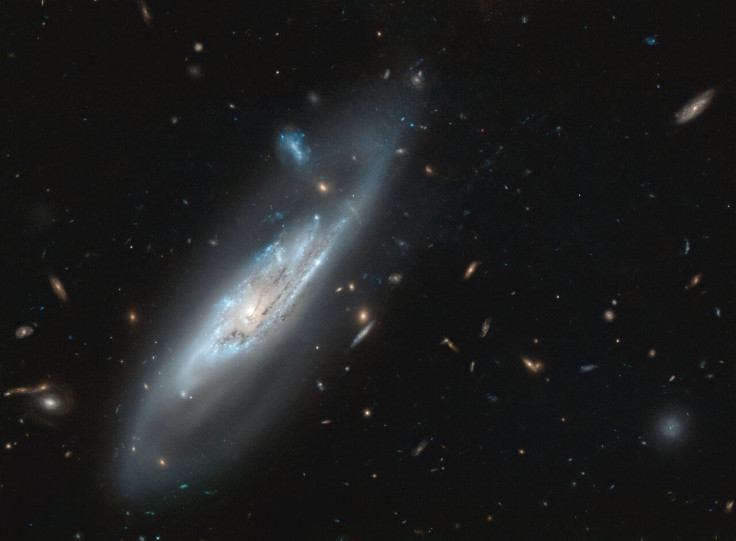Stunning Spiral Galaxy With Ghostly Arms Captured In Photo By NASA's Hubble
KEY POINTS
- The Hubble Space Telescope captured a new image of the spiral galaxy NGC 4848
- NGC 4848's arms are filled with new stars
- Hubble's photo also features the barred spiral galaxy's faint tails
The Hubble Space Telescope has snapped a stunning new photo of a distant spiral galaxy. NASA and the European Space Agency’s (ESA) space telescope was also able to capture the faint wispy features that contribute to the galaxy’s distinct shape.
The massive cosmic structure featured in Hubble’s latest photo has been identified as NGC 4848. As a spiral galaxy, NGC 4848 is characterized by its twirling arms radiating from the center.
NGC 4848 is located in the Coma Berenices constellation, which is also known as Berenice’s Hair. It lies about 336 million light-years from Earth’s neighborhood. It was first discovered in 1865 by Heinrich Louis d’Arrest, an astronomer based in Germany.
According to the ESA, NGC 4848, which has a diameter of about 150,000 light-years, is considered to be a barred spiral galaxy. This means that it has a cosmic structure running through its center that’s filled with stars and other cosmic materials.
In the photo taken by Hubble, NGC 4848’s prominent arms can be clearly seen. These arms, which radiate from the center of the galaxy, give NGC 4848 its distinct shape.
“A notable feature of most spiral galaxies is the multitude of arching spiral arms that seemingly spin out from the galaxy’s center,” the ESA explained in a statement. “In this image, taken with the NASA/ESA Hubble Space Telescope, the stunning silvery-blue spiral arms of the galaxy NGC 4848 are observed in immense detail.”
As noted by the ESA, multiple newborn stars can be seen within the arms of the spiral galaxy. Aside from these prominent features, Hubble was also able to capture the image of the galaxy’s faint tails that extend away from its spiral arms. In the photo, the tails appear as ghostly features of the galaxy.
“Not only do we see the inner section of the spiral arms containing hundreds of thousands of young, bright, blue stars, but Hubble has also captured the extremely faint wispy tails of the outer spiral arms,” the ESA stated.
In most cases, the tails of galaxies are filled with stellar material and cosmic gas that extend out into space. These usually form due to gravitational forces pulling on the galaxy.

© Copyright IBTimes 2024. All rights reserved.





















